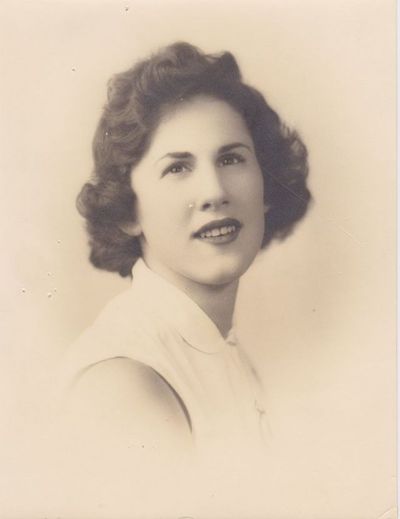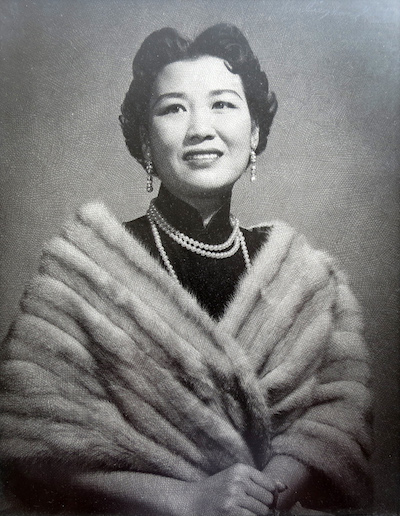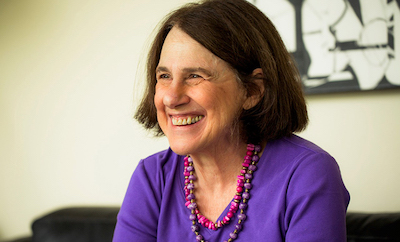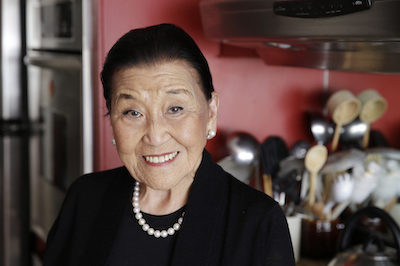“It became such a recurring experience during this period when I was twenty -- to be starving and afraid of running out of money -- as I wandered from Brussels to Burma and everywhere in between for months on end, that I later came to see it as a part of my training as a cook…. Hunger was not general, ever, for just something, anything, to eat. My hunger grew so specific I could name every corner and fold of it. Salty, warm, brothy, starchy, fatty, sweet, clean and crunchy, crisp and water, and so on.”
- Gabrielle Hamilton, chef-owner of Prune & author of Blood, Bones, and Butter
1. Peanut Butter
During my pregnancy, my husband was the one afflicted with food cravings.
I grew easily winded. My gums bled. My back ached with the strain of the excess weight. Yet I never experienced those 3 AM cravings for pickles and ice cream, preferably together, that are the stuff of tame pregnancy-related comedy.
Sol, on the other hand, began consuming copious amounts of peanut butter. Suddenly, wherever I turned, he was licking the (peanut) butter knife or chasing the few stray crumbs of peanut-butter-slathered crackers stuck in his beard. An odd but endearing variation on Couvade syndrome.
My cravings hit much later, after the initial newborn fog, when our baby was around six months old. The hunger pangs had nothing to do with food or (alas) with sex.
Pre-baby, writing and research had been a sometimes enjoyable but mainly unremarkable part of graduate school and academic life. Post-baby, they took on a new urgency. I was back to work part-time but barely functional, still waking up for night feedings, still pumping by day in a repurposed electrical closet on campus. As much as my home and to-do lists and breasts were brimmingly full, I also felt starved, hollow.
Unable to make time or muster energy for writing, my mind returned again and again to fantasies about it, like a hungry person who imagines a holiday table groaning with food.
…
If one woman “reigns supreme” (to borrow the language of Iron Chef) in today’s testosterone-drenched food world, it might be Alice Waters. The creator of the famed Chez Panisse in Berkeley pioneered the organic, locavore movement in restaurants around the U.S.
This essay is not about Waters, although she, too, navigated cooking, parenthood, and social upheaval, as a restauranteur and mother coming of age in the turbulent 1960s. Instead, I wanted to focus on two of her lesser-known but equally formidable contemporaries: restauranteur Cecilia Chiang and cookbook-author Paula Wolfert.
As young mothers, both Chiang and Wolfert found themselves in dire straits.
In 1949, the 30-year-old Chiang, her then-husband Liang and their three-year-old daughter May took the last flight out of Shanghai during the Communist Revolution. Since the family had only three plane tickets, she left her infant Philip with a sister.* Chiang wouldn’t be reunited with her son for over a year.
Twenty years later, in 1969, the 31-year-old Wolfert embarked on a ship from Paris to New York, while contemplating a nauseatingly uncertain future: “On the boat, Paula feigned calm for the children but felt a roiling sense of panic. She had no clear way to support herself or the kids.” She was suddenly a single mother of two and sole breadwinner after her bohemian marriage turned sour.
Faced with such challenges, Chiang and Wolfert both survived, and then thrived, not by following the conventional path. Instead, they listened to a craving.**
The craving might have been triggered by nostalgia for a disappearing homeland (Chiang) or curiosity about an adopted one (Wolfert). Regardless of the craving’s source, they chased after it, using the specificity and poignancy of their hunger to fuel the creation of a business or a book.
But Chiang and Wolfert had no ordinary appetites. Their palates and proclivities would do more than transform their own careers; they would redefine the landscape of American food. At least as much as their friend Alice Waters, they taught us what, and how, to eat.
2. Red-Cooked Pork
Here’s how the story goes: in 1960, Cecilia Chiang was visiting her recently widowed sister in San Francisco. After meeting two Chinese women she had known back in Tokyo, she decided to front them the $10,000 they needed to secure a restaurant lease. The women got cold feet, and Chiang was stuck with a lease for a commercial space on San Francisco’s Polk Street.
So, Chiang took the only obvious course of action available to her: she opened her own place. In a country halfway around the world from her husband and two kids. Where she had only a three-month visa.
What’s missing, of course, is the motive. How did Chiang, who grew up with such enormous wealth that she was never even allowed in the kitchen, find herself opening a restaurant on her own in a foreign country?*** What combination of vision, drive, or desperation had brought her to that point?
Cecilia Chiang at The Mandarin, circa 1968.
For one, by the time Chiang found herself contemplating restaurant ownership in the United States, she had known hunger. During the Japanese occupation of China in World War Two, her family struggled to supplement their meager rations; Chiang would often hunt for wheat flour, rice, pork, and sugar on the black market, then sneak them home, hidden under her clothes, by bicycle. She and a sister finally decided to leave home, trekking six months on foot to find refuge in Chiang Kai-shek’s “Free China.” Quickly dispossessed of their luggage, the young women journeyed through dangerous territory with little money and just the clothes on their backs.
Beyond physical hunger, Chiang’s entrepreneurial dreams tapped into an existential kind of longing. In the documentary Soul of a Banquet, Chiang explains her goal of educating Americans about “real Chinese food,” of sharing her history with a U.S. public. This hunger was made more acute because she knew that the cuisine of her youth no longer existed in her homeland, that it was being actively erased under Communist rule.
As a result, Chiang’s restaurant, the Mandarin, would tell her deeply personal story of food, a kind of family history and culinary manifesto all wrapped up into one.
Despite her lack of training as a chef, what Chiang brought to the proverbial table was a keen taste memory. She had culled it in the dining room of a 52-room palace in Beijing, where she and her siblings would gather around her father’s table as he ate. Red-cooked pork belly, which she calls her “signature dish,” brought Chiang back to the childhood pleasure of eating the remaining pork drippings over rice.
At the same time, Chiang’s appetites for the food of her past created a new demand in the U.S., a new sophistication in the palates of the next generation of American chefs and eaters. The Mandarin was a corrective to the inexpensive convenience cooking of “chop suey” parlors that had dominated American Chinese food up to that time. The restaurant, relocated in 1968 to Ghirardelli Square, served upscale re-imaginings of northern Chinese dishes in a lavish 300-seat dining room.
And yes, Chiang would readily admit, the Mandarin also brought her money, status, and the personal independence that such financial security and social standing could bring. I wonder (mere gossipy speculation) if the Mandarin’s success was in part an excuse to exit an unhappy marriage. In 1961, Chiang and her husband separated. She sent for their two children, now teenagers, to come and live with her in Northern California.
Chiang with her son Philip. He would go on to create the restaurant chain P.F. Chang’s (the antithesis of his mother’s restaurant, IMO).
Chiang’s cravings stemmed from nostalgia; they were born out of history’s erasures. But Chiang’s appetites also led her to assert her place, as both a Chinese immigrant and a female restauranteur, in contemporary U.S. food culture and society at large. The Mandarin’s celebrated dishes—pot stickers, minced squab, beggar’s chicken—both faced backward, toward a vanished past, and looked ahead to an imagined future. Their spirit was part Proust’s madeleine, part elBulli’s spherified olive.
3. Chicken Tagine
In 1959, the 21-year-old Wolfert left a promising, if exhausting, job as a line cook at The Four Seasons (incurring the wrath of food-world luminary James Beard in the process) to seek adventure with her Beatnik writer-husband in Tangier. Although her travels around the Mediterranean would set the stage for the epic food carer to follow, she didn’t do much professional cooking at the time, particularly once she gave birth to Nicholas in 1962 and to Leila one year later.
For Wolfert, early motherhood was a hiatus from working in food, and a delightful one at that. She raised her two young children while assisting part-time at the local office of The Paris Review.
Wolfert with daughter Leila, 1963.
At the same time she felt such fulfillment as a mother, her marriage was disintegrating, due to her husband Michael’s multiple infidelities and more-than-recreational drug use.
Finally, in 1969, Wolfert found herself on that boat back to New York City, while her ex moved to Sweden to take up with an artist he’d met during the Paris riots the year before. Adventure had its dark side: heartbreak, financial insecurity.
But out of that (pardon my French) shitty time emerged Wolfert’s ingenuity, as well as her distinctive voice in and approach to food. After being laid off from a typing job at an ad agency, she swore to work only for herself: “she would never again rely on anyone to support her, neither a husband nor an employer.” This resolution entailed a return to New York’s food world.
So, half a century before meal-subscription services like Blue Apron existed, Wolfert set to work on one. These “Party Boxes,” launched through the music subscription-service Columbia House, sent home cooks a monthly box of recipes, rare ingredients, and supplies for hosting a dinner party from a different country. Wolfert was hired to unearth and test the recipes, from cold poached chicken with Sichuan peppercorns for the Chinese party box to gado-gado and sambal oelek for an Indonesian one.
That pattern—of being so far ahead of her time as to seem a visitor from the culinary future—would play out again and again in Wolfert’s career.
Reading Unforgettable, Emily Kaiser Thelin’s lovely and heartfelt biography of Wolfert, I was floored by both the breadth and depth of Wolfert’s influence on U.S. food culture. Certainly, she became celebrated for her pioneering English-language book on Moroccan food, which earned her the nickname “Madame Couscous.” But that’s just the beginning—from introducing the U.S. to the regional cuisine of Southwest France to cribbing a recipe for salmon cooked at a low temperature from legendary French chef Michel Bras.
Wolfert in a Moroccan market (early 1970s).
Arguably, one of Wolfert’s most prescient books is 1994’s Eastern Mediterranean, which introduced the U.S. to Middle Eastern techniques and ingredients a decade or so before the surge of interest attributed to Yotam Ottolenghi and his peers:
Many of the Middle Eastern culinary practices commonplace in the United States owe their prominence in no small part to Eastern Mediterranean. This is true not only of the popularity of mezes (small plates) but also of the elevation of vegetables to a main dish (and the relegation of meat to a condiment) and the regular use of such pantry staples as sumac, pomegranate molasses, and Aleppo, Marash, and Urfa peppers.
Wolfert’s name never reached the mainstream recognition of an Alice Waters or a Julia Child, nor did many of her books have particularly strong sales. But her influence on the past two generations of chefs is incalculable. Mourad Lahlou, who, as a young man, was forbidden from his mother’s Moroccan kitchen, used Couscous as a crib sheet for his trailblazing San Francisco restaurant Aziza. Ana Sortun, of famed Oleana restaurant in Cambridge, Mass., was introduced to Turkish cuisine through Wolfert. Behind the scenes, Wolfert’s books would become cult favorites of big-name chefs from Waters to Daniel Patterson.
In some ways, we in 2019 are still trying to catch up to Wolfert’s roving appetite. For instance, her 1998 book Grains and Greens, inspired by her move to Northern California in the 1990s, focuses on alternative grains and foraged vegetables. Although foraging is a bit more familiar today than it was two decades ago, it’s hardly a mainstream practice, nor are wild greens readily available in most supermarkets.
…
Once her new partner Bill moved in and became a co-parent to Nicholas and Leila, Wolfert began to follow her culinary curiosity further afield. She followed it everywhere from Sicily to Spain, Turkey to the Philippines. She was always striking out for the territory, scanning the horizon for the next geographical region to adopt.
On the one hand, Wolfert’s work as a cookbook author was characterized by a rigorous, immersive detail, a perfectionist streak. But before she could craft these expert culinary tomes, she had to be moved, transported, on a more elemental level. She had to identify a craving.
Today, from her home in Sonoma, Wolfert is once again heading out for unknown terrain: the intricacies of her failing mind. Now 81, Wolfert has sadly received a diagnosis of stage four Alzheimer’s. In characteristic fashion, Wolfert has immersed herself in research, determined to keep the next stage at bay as long as possible. And, just as she did when her marriage collapsed, using food as a form of healing.*****
IMAGES, from left: Wolfert and Chiang in the 1950s and ‘60s, respectively; Wolfert and Chiang today.
4. Oysters
One of the most valuable lessons I’ve learned, or that I’ve started to learn, as a writer is to respect my cravings. What is the project or activity that entices me right now? Which conditions trigger those creative appetites, and when will trying to “power through” only lead to frustration, disengagement?
Parenthood in particular has brought an understanding that hunger—figuratively speaking, that is—is a necessary ingredient in any creative or entrepreneurial pursuit. Those ravenous periods, the Lean Times of sleepless exhaustion, competing demands, and constant interruptions, have only clarified and intensified my craving to write.
Four years into motherhood, I am just beginning to sharpen my oyster knife.*****
NOTES
* Chiang never made this impossible choice between her children; her husband did. He reasoned that the baby would make the adjustment to his parents’ absence more readily than their three-year-old.
Philip, by the way, would leave Shanghai with Chiang’s sister on a different plane, but its destination was Taiwan. In the chaotic aftermath, it took more than a year for the family to be reunited in Tokyo.
In both of her memoirs, The Mandarin Way (1974) and The Seventh Daughter (2007), Chiang is mostly reticent about her experience of motherhood. She does, however, talk briefly about how the disorientation of ex pat life in 1950s Japan exacerbated her domestic panic and ennui. Chiang had lived with such privilege that caring for two kids on her own was a novel experience:
(My husband) was working long hours and I was alone…. Suddenly, I had to care for a young child without a nanny, and prepare meals without a chef. (I’m embarrassed now when I think of how spoiled I had been.) I couldn’t speak the language, and when I went to the food markets, there was little that I recognized and no one to ask for help. There were many times when May would cry for her nanny, and I would cry along with her.
At the same time, this transitional time birthed a new resilience, resourcefulness. About four months after she arrived in Tokyo, Chiang stopped on the way home from the market to observe a raging fire near the Chinese Mission, then realized that all of the firefighters were women. After that fire, she noticed women in all sorts of conventionally male roles, from directing traffic to constructing buildings. Women were rebuilding post-war Tokyo: “Suddenly, I knew I needed to pull myself together and stop feeling so frightened and sorry for myself. If these women could be strong, so could I.”
**I hesitate a bit because the word ‘craving’ might sound too much like ‘female intuition.’ But cravings (in my definition) signal the close link between emotions or drives and the more rational parts of our brains. To the extent that being in touch with those desires might energize us and inspire us to think creatively, cravings can be the seeds of meaningful, engaged work.
***As it turns out, there is some self-mythologizing in this version of events. Chiang did have previous restaurant experience, as part-owner of the restaurant Forbidden City, which she opened with partners after her migration to Tokyo in the 1950s. In the space on Polk Street, too, Chiang was not so much a disinterested benefactor as a planned partner in the venture.
****I should note here that Cecilia Chiang is also living. She is now 99 years old (!), and is still active, dining out regularly in San Francisco. As her granddaughter Siena puts it: “I am certain that she will leave this earth having tried the latest restaurant the night before, with more than a few ideas for how it could be better.” Chiang has also become a mentor to yet another generation of SF chefs, including Belinda Leong of B. Patisserie and Corey Lee of Benu.
*****I am stealing this brilliant turn-of-phrase from my beloved Zora Neale Hurston. She uses it far more dramatically: to signal her zest for life, her forward- and future-looking self, when anyone confronts her with the traumas faced by her ancestors: “But I am not tragically colored. There is no great sorrow dammed up in my soul, nor lurking behind my eyes…. Even in the helter-skelter skirmish that is my life, I have seen that the world is to the strong regardless of a little pigmentation more or less. No, I do not weep at the world--I am too busy sharpening my oyster knife.”







